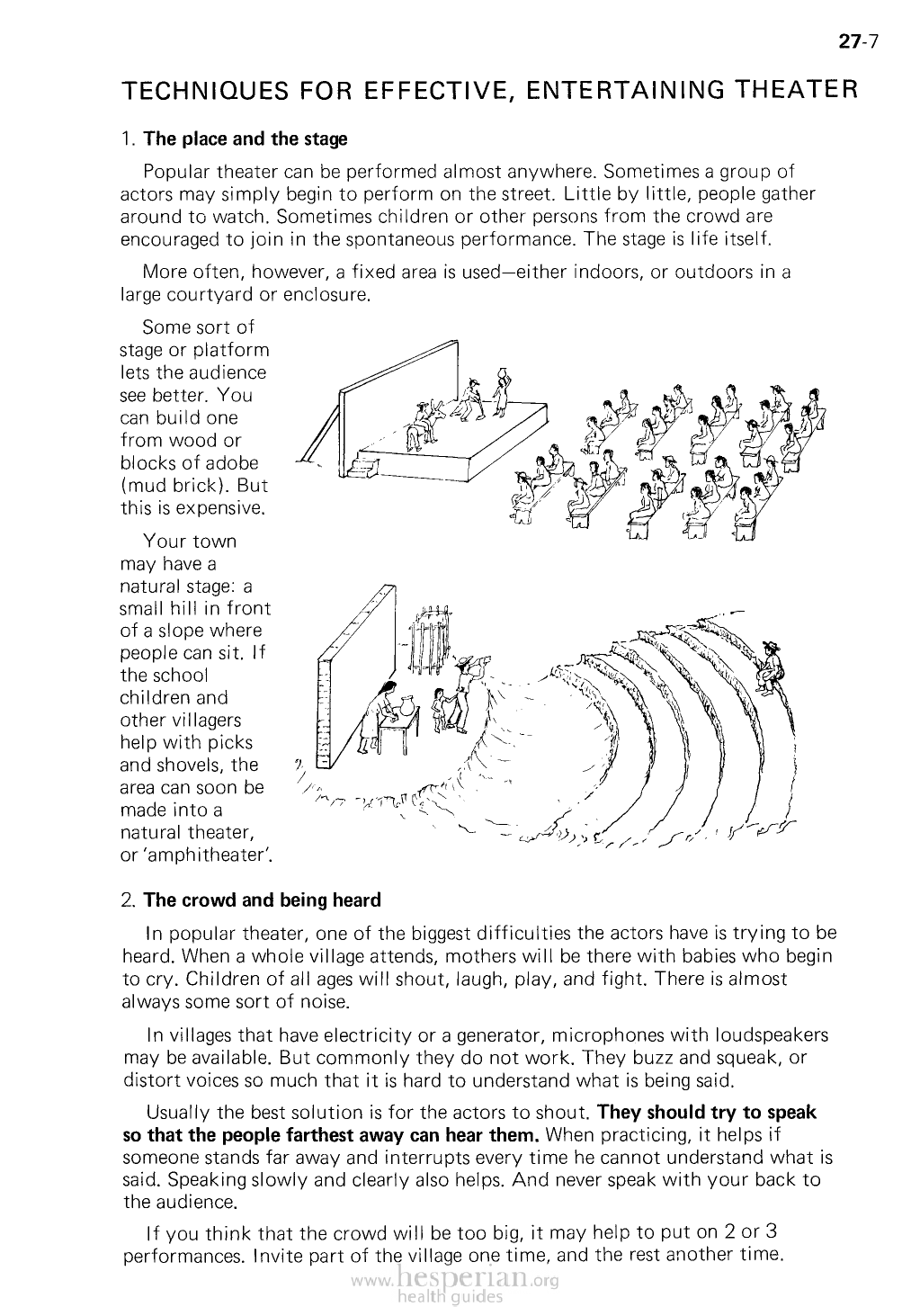
27-7
TECHNIQUES FOR EFFECTIVE, ENTERTAINING THEATER
1. The place and the stage
Popular theater can be performed almost anywhere. Sometimes a group of actors
may simply begin to perform on the street. Little by little, people gather around to
watch. Sometimes children or other persons from the crowd are encouraged to join
in the spontaneous performance. The stage is life itself.
More often, however, a fixed area is used—either indoors, or outdoors in a large
courtyard or enclosure.
Some sort of
stage or platform
lets the audience
see better. You
can build one
from wood or
blocks of adobe
(mud brick). But
this is expensive.
Your town may
have a natural
stage: a small
hill in front of
a slope where
people can sit.
If the school
children and
other villagers
help with picks
and shovels, the
area can soon
be made into a
natural theater, or
‘amphitheater’.
2. The crowd and being heard
In popular theater, one of the biggest difficulties the actors have is trying to be
heard. When a whole village attends, mothers will be there with babies who begin
to cry. Children of all ages will shout, laugh, play, and fight. There is almost always
some sort of noise.
In villages that have electricity or a generator, microphones with loudspeakers
may be available. But commonly they do not work. They buzz and squeak, or distort
voices so much that it is hard to understand what is being said.
Usually the best solution is for the actors to shout. They should try to speak
so that the people farthest away can hear them. When practicing, it helps if
someone stands far away and interrupts every time he cannot understand what is
said. Speaking slowly and clearly also helps. And never speak with your back to the
audience.
If you think that the crowd will be too big, it may help to put on 2 or 3
performances. Invite part of the village one time, and the rest another time.